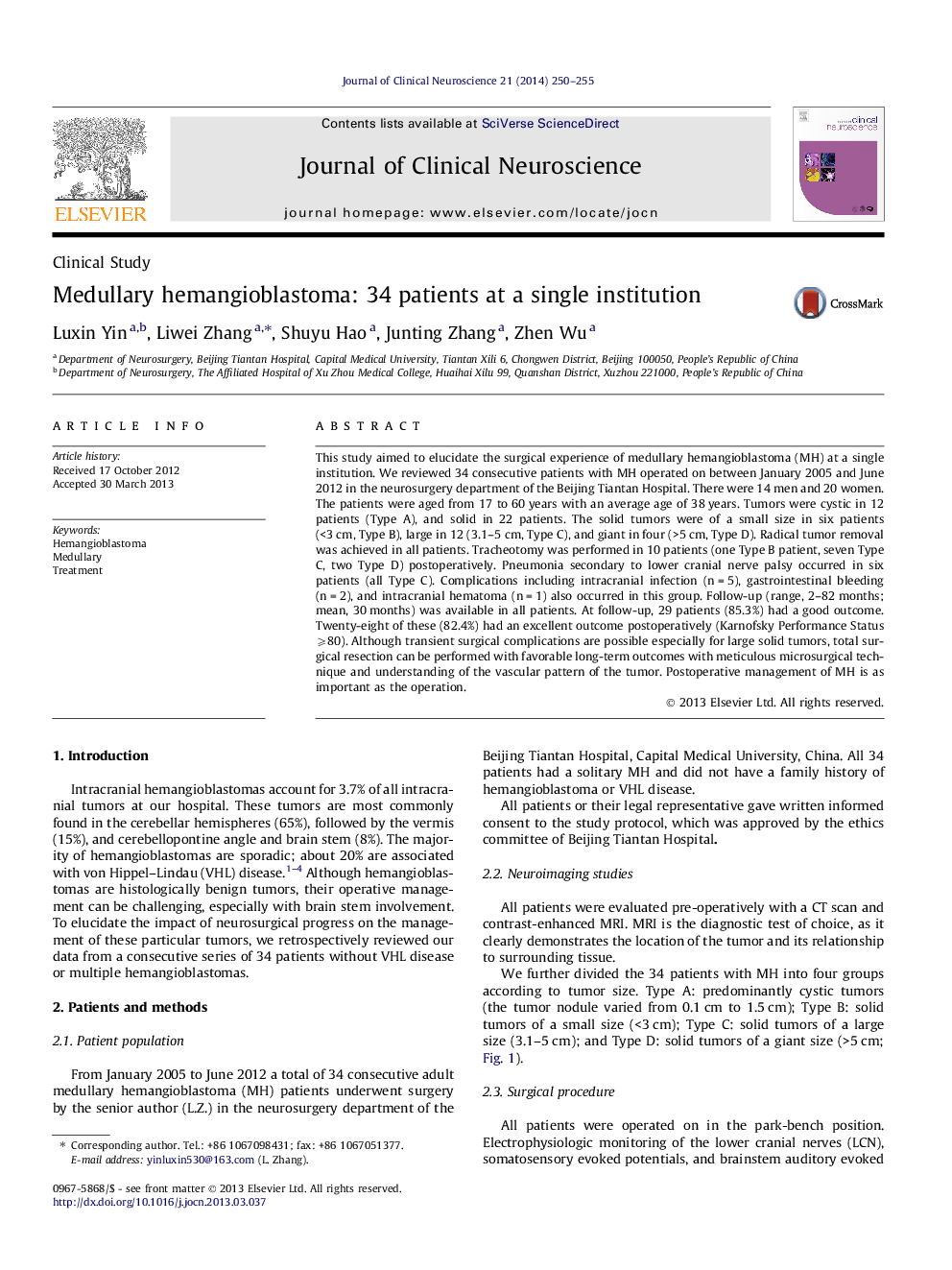| Article ID | Journal | Published Year | Pages | File Type |
|---|---|---|---|---|
| 3059231 | Journal of Clinical Neuroscience | 2014 | 6 Pages |
This study aimed to elucidate the surgical experience of medullary hemangioblastoma (MH) at a single institution. We reviewed 34 consecutive patients with MH operated on between January 2005 and June 2012 in the neurosurgery department of the Beijing Tiantan Hospital. There were 14 men and 20 women. The patients were aged from 17 to 60 years with an average age of 38 years. Tumors were cystic in 12 patients (Type A), and solid in 22 patients. The solid tumors were of a small size in six patients (<3 cm, Type B), large in 12 (3.1–5 cm, Type C), and giant in four (>5 cm, Type D). Radical tumor removal was achieved in all patients. Tracheotomy was performed in 10 patients (one Type B patient, seven Type C, two Type D) postoperatively. Pneumonia secondary to lower cranial nerve palsy occurred in six patients (all Type C). Complications including intracranial infection (n = 5), gastrointestinal bleeding (n = 2), and intracranial hematoma (n = 1) also occurred in this group. Follow-up (range, 2–82 months; mean, 30 months) was available in all patients. At follow-up, 29 patients (85.3%) had a good outcome. Twenty-eight of these (82.4%) had an excellent outcome postoperatively (Karnofsky Performance Status ⩾80). Although transient surgical complications are possible especially for large solid tumors, total surgical resection can be performed with favorable long-term outcomes with meticulous microsurgical technique and understanding of the vascular pattern of the tumor. Postoperative management of MH is as important as the operation.
